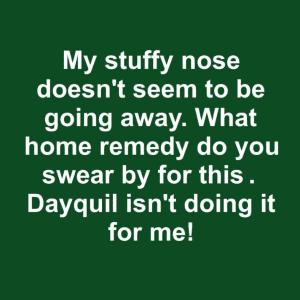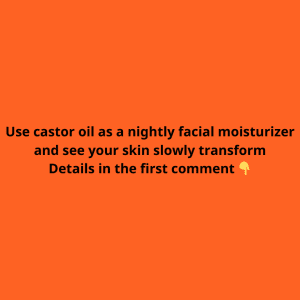In today’s society, there’s immense pressure to achieve a flawless complexion. Issues like age spots, moles, skin tags, blackheads, and warts are often seen as undesirable. While medical treatments are available to address these concerns, they can be costly and sometimes come with unwanted side effects. Fortunately, natural skin care offers effective alternatives that are gentler on the skin and easier on the wallet. Let’s explore how to naturally care for these common skin problems.

Natural Remedies for Age Spots and Hyperpigmentation
Age spots, also known as liver spots or sun spots, are areas of hyperpigmentation caused by prolonged sun exposure. Although harmless, they can be a cosmetic concern for many. Prevention is the first line of defense, with daily sunscreen use being crucial. But if you already have age spots, natural remedies can help lighten them.
Apple Cider Vinegar (ACV): The acetic acid in ACV can lighten skin pigmentation. Mix equal parts of ACV and water, apply to dark spots, leave for a few minutes, and rinse. Repeat this process twice daily for best results.
Aloe Vera: The aloin in aloe vera is a natural depigmentation compound. Apply aloe vera gel to the affected areas before bed, and rinse off in the morning.
Green Tea Extract: Known for its antioxidant properties, green tea extract can help reduce pigmentation. Use it as directed on the product label for effective results.
Lactic Acid Peels: Found in milk products, lactic acid is a gentle exfoliant that can lighten age spots without irritating sensitive skin. After using lactic acid, always apply sunscreen to protect your skin.

These natural remedies can be a gentle yet effective way to reduce the appearance of age spots, leaving your skin looking more even-toned and radiant.
How to Safely Remove Skin Tags at Home
Skin tags are small, benign growths that often appear in areas where skin rubs against skin, like the neck, armpits, and groin. While they’re generally harmless, they can be annoying or unsightly. Thankfully, you can remove them naturally at home.

Tea Tree Oil: This oil is a powerful antifungal and antiviral agent. Dilute a few drops of tea tree oil in a carrier oil, such as coconut oil, and apply it to the skin tag with a cotton swab. Cover with a bandage and repeat nightly until the skin tag dries up and falls off.
At-Home Freezing Kits: These kits are available over the counter and work by freezing the skin tag off. Follow the instructions carefully, and if it doesn’t work, consult your doctor.
It’s important to be cautious when removing skin tags at home. Never attempt to cut them off yourself, as this can lead to infection, bleeding, and scarring.
Natural Solutions for Warts
Warts, caused by the human papillomavirus (HPV), are another common skin issue. While they are harmless, they can be unsightly and uncomfortable. Instead of opting for harsh medical treatments, try these natural remedies:

Apple Cider Vinegar (ACV): ACV’s acetic acid content helps break down the wart tissue, eventually causing it to fall off. Dilute ACV with water, soak a cotton ball in the mixture, and secure it over the wart with a bandage. Leave it on overnight and repeat daily.
Bee Propolis: This substance, produced by bees, has antiviral properties and promotes skin healing. Apply propolis to the wart and cover it with a bandage overnight. Repeat until the wart is gone.
Duct Tape: This unconventional method involves covering the wart with duct tape for several days, then removing it, soaking the wart in water, and gently scrubbing with a pumice stone. Repeat the process until the wart is gone.
These natural remedies are a gentler alternative to medical wart treatments, though they may take longer to show results.
Managing Blackheads with Natural Ingredients
Blackheads are a common form of acne that results from clogged pores. Unlike whiteheads, blackheads are open to the air, which causes the trapped oil and dead skin cells to oxidize and turn black. Instead of squeezing them, which can damage your skin, try these natural solutions:

Salicylic Acid: A cleanser containing salicylic acid helps break down the dead skin and oil that cause blackheads. It also clears other daily impurities from your skin.
AHAs and BHAs: Alpha and beta-hydroxy acids exfoliate the skin, removing the dead skin cells that clog pores. Glycolic acid (AHA) and salicylic acid (BHA) are commonly used for this purpose.
Clay Masks: Clay masks draw out oils and toxins from the skin, making them especially effective for oily skin types. Use once a week for best results.
Baking Soda and Water: Baking soda acts as a gentle exfoliant, removing dead skin cells and unclogging pores. Mix it with water to form a paste, massage it into your skin, and rinse thoroughly.
These natural remedies can help keep blackheads at bay without causing irritation or damage to your skin.
The Bottom Line: Natural Skin Care is Effective and Gentle
Natural skin care offers a range of effective solutions for common skin problems like age spots, skin tags, warts, and blackheads. While these remedies may take longer to work than medical treatments, they are generally safer, more affordable, and free from harsh chemicals.
Remember to always patch-test any new product or remedy on a small area of your skin to ensure you don’t have an adverse reaction. If a skin issue persists or worsens, consult a dermatologist for professional advice.
By incorporating natural remedies into your skincare routine, you can address these common concerns and achieve healthier, clearer skin.


